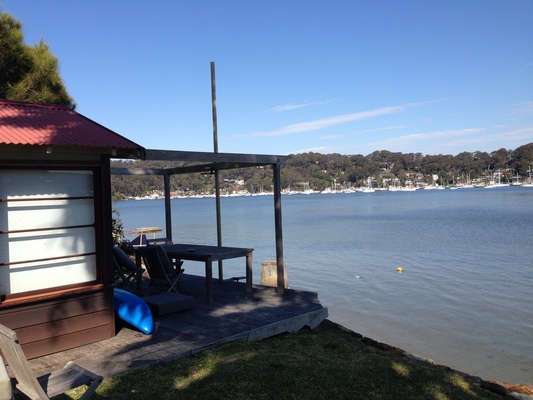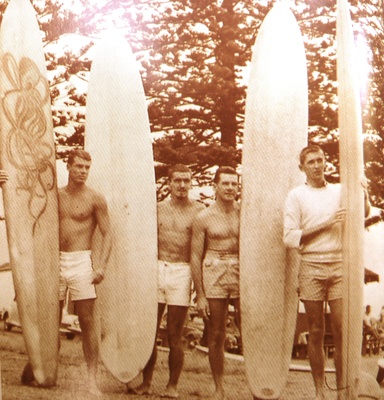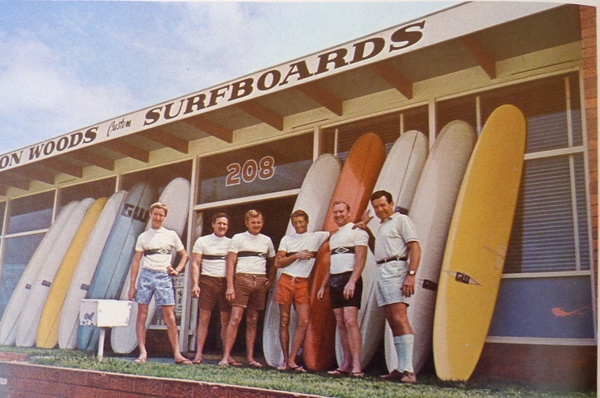
By PHIL JARRATT
IN SYDNEY last week I caught up with some of the original members of the Brookvale Mafia.
“Don’t call us that,” scolded 90-year-old Gordon Woods, who with Noosa’s own Billy Wallace pioneered the modern surfboard industry, building wooden “toothpicks” under houses in Bondi and Coogee in the war years.
We were sitting down for a cup of tea in his penthouse apartment, with stunning views out over Manly and the Heads.
“I don’t know where that nonsense came from. We were just hard-working fellows who saw an opportunity and took it.”
Indeed they did. When the American and Hawaiian lifeguard teams visited Australia for an international surf carnival held at Torquay, Victoria, in conjunction with the 1956 Melbourne Olympics, they brought with them their revolutionary “Malibu Chip” surfboards, shaped from super-lightweight balsa wood and sealed in a plastic shell.
They demonstrated their skills in Sydney before heading south, blowing the collective minds of the tiny surfing community with their turns across the wave face held in check by plywood fins.
This was far more advanced than anything the Australians had seen, and the race was on to get a hold of a “Yank board” before they left the country. Gordon Woods tried out Bob Burnside’s ten-footer at Bondi and had to have it. He threw a few mates in his car to help cover the petrol bills and drove south, cornering Burnside at the Torquay carnival and extracting an agreement to purchase the board when he returned to Sydney.
A couple of the other young surfers managed to buy boards from the Americans, including Bob Pike, later a famous big wave rider, who bought a beautiful, sleek red gun from paddling hero Tommy Zahn, who was chiefly famous at the time for having dated Marilyn Monroe.
But Pike found the board too unstable and sold it to Denny Keogh, who had started surfing at Manly in 1945 on a solid redwood board owned by Claude West, who had been taught to surf in 1915 by Duke Kahanamoku.
“Do you know what happened to that beautiful board?” Denny asked me rhetorically when we had lunch at the Harbord Diggers Club last week.
“I’d started making balsa boards with Bill Clymer and we ran out of balsa and still had an order to fulfil. So I stripped the glass off the Tommy Zahn red rocket and reshaped it for the customer.”
Denny took a big slug of his merlot and waited for the shock of this to sink in. “And do you know what else? I coined the phrase ‘Brookvale Mafia’. You’d better not tell Gordon that!”
I dropped around the corner to see Barry Bennett at the sprawling Bennett Surfboards and Dion Chemicals factory on Harbord Road, where Barry has reigned supreme as Australia’s leading supplier of foam surfboard blanks for more than half a century now, and found Bennett, 84 years young next month, emerging from the shaping bay with foam dust coating his shoulders.
“Jeez, Barry,” I said, “you’re not still mowing foam, are you?” The multi-millionaire gave me his famous crooked grin and said, “Gotta keep me hand in.”
The group of surfboard pioneers who I shall no longer refer to as the Brookvale Mafia, still meet for lunch at a cafe in Dee Why about once a month to reminisce, but after all these years, they still can’t agree on who came first. What we do know is that around 1957, when a man named Arthur Milner started importing Ecuadorian balsa, thus ending the shortage that had forced Gordon Woods and Bill Wallace to copy the American boards in hollow, ply-coated versions known as okinuis, it started to get difficult to find places to house surfboard factories in Bondi and Coogee.
Gordon Woods and Barry Bennett started looking on the other side of the Harbour, and independently bought chunks of an old market garden in a valley behind Freshwater Beach. By 1958 they had been joined in Brookvale by Denny Keogh (trading as Keyo Surfboards), Scott Dillon, Bill Wallace and Greg McDonagh.
Soon they were experimenting with foam blanks instead of balsa, and as the 1960s began, virtually all of the Australian surfboard industry was housed in a few blocks of new industrial estate at Brookvale. When I bought my first new surfboard in 1965, I traded in my water-logged Barry Bennett and got a sparking green Gordon Woods, choosing it from a selection of “shop boards” that Gordon and his staff would display on the lawn in front of the factory every Saturday.
“Brookie” has lost much of its character over the years as the surfboard industry has decentralised, but the men who founded it have lost none of theirs.








